 Herbs--S
Herbs--S 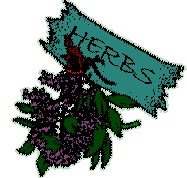
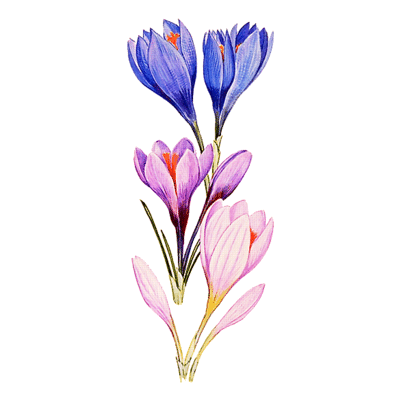 |
Common Names: Saffron, Autumn Crocus, Spanish Saffron Latin Name: Crocus sativus Parts Used: Stigmata Cultivation: Saffron is a fall-blooming crocus, grown from a bulb. It is hardy to zone 6, and likes light, well-drained soil in full sun to part shade. Before you get excited about growing it yourself, you should realize that it takes about 35,000 flowers to make one pound of saffron! Culinary Uses: Saffron is used extensively in the cuisines of East India, the Middle East, and North Africa. It's used in bouillabaisse and paella; eggs, cheese, lamb, and rice dishes. A small pinch imparts a rich briny taste and a deep yellow color. Magickal Uses: Add saffron to love and lust sachets or use it in helaing spells. Drinking saffron tea will aid you in seeing the future, while eating saffron will bring joy. Medicinal Uses: Saffron is considered an aphrodisiac and an appetite stimulant. Because of its high cost, however, it is rarely used medicinally. |
 |
Common Names: Sage, Red Sage Latin Name: Salvia officinalis Parts Used: Leaves Cultivation: Sage is a hardy perennial subshrub. It likes well-drained, moderately rich soil, with a pH of 6.4, in full sun to part shade. Cosmetic Uses: Use sage infusions to color silver hair. It makes a soothing astringent aftershave and skin lotion. Culinary Uses: No Thanksgiving turkey would be complete without sage stuffing! Sage goes well with most meats and combines especially well with thyme, onions, and parsley. Use the young leaves fresh in salads. Magickal Uses: Use sage in healing and money spells. Eating sage is said to bring long life. It is considered bad luck to plant sage in your own garden; you should have a stranger do it for you. Medicinal Uses: Drink hot infusions of sage for colds. Sage tea mixed with cider vinegar is an excellent gargle for sore throats, laryngitis, and tonsillitis. Sage tea is also an effective mouthwash for combating mouth ulcers and gum infections. Sage helps dry up the milk flow and is useful in treating ammenorrhea and painful periods. |
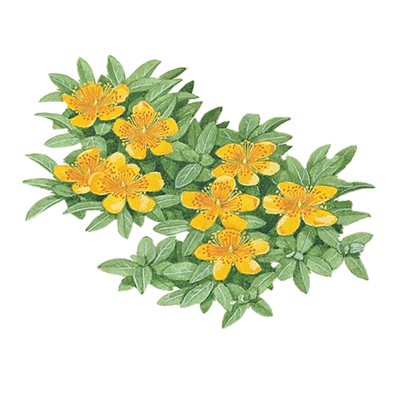 |
Common Names: St John's Wort, Scare-Devil, Goat Weed Latin Name: Hypericum perforatum Parts Used: Leaves, flowers, and stems Cultivation: St John's Wort is a perennial, hardy to zone 5. It will grow in just about any soil in full sun to part shade. Magickal Uses: St John's Wort gets its name from John the Baptist; it is supposed to be gathered at Midsummer. Wear it to keep colds, fevers, and mental illnesses at bay. Hang it in a window to protect against storms and fire. Medicinal Uses: Externally St John's Wort is specific for treating burns and scalds, as well as the pain of neuralgia and sciatica. Use internally as an expectorant for treating bronchitis. St John's Wort tea is useful for easing menstrual cramps. St John's Wort is also used to treat depression and is gaining quite a reputation as "Nature's Prozac." Cautions: St John's Wort is rated unsafe by the USFDA. Prolonged use may cause photosensitivity. |
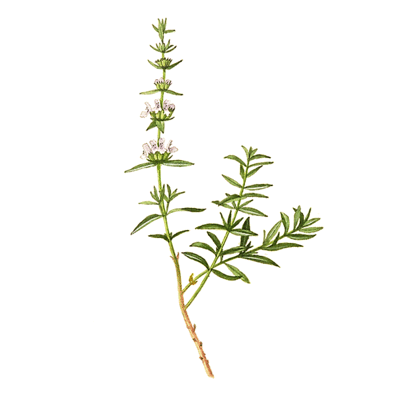 |
Common Names: Savory Latin Name: Satureja hortensis (summer), S. montana (winter) Parts Used: Leaves Cultivation: Summer savory is an annual growing in average soil in full sun. Winter savory is a tender perennial, hardy only to zone 8, which prefers light, dry, well-drained soil in full sun. Culinary Uses: Savory is known as "the bean herb" and it certainly has an affinity for that vegetable. It is also good with game meats and sausage, and is used extensively in German cooking. Savory tastes like peppery thyme; winter savory has a stronger, coarser flavor. Medicinal Uses: Summer savory is effective in treating diarrhea, upset stomach, and sore throat. |
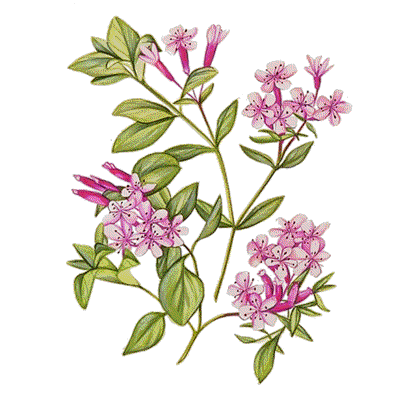 |
Common Names: Soapwort Latin Name: Saponaria officinalis Parts Used: Roots and leaves Cultivation: Soapwort is a perennial weed, hardy to zone 3. It will grow in average to poor soil in full sun to part shade. It self-sows readily and is quite intrusive. Cosmetic Uses: Boil leaves and root to make a sudsy cleansing solution. Medicinal Uses: Soapwort is a strong laxative but unfortunately tastes like (you guessed it!) soap. Apply the juice externally to stop the irritation of acne and eczema. |
Common Names: Southernwood, Garde Robe, Maid's Ruin Latin Name: Artemesia abrotanum Parts Used: Leaves Cultivation: Southernwood, despite its name, is hardy to zone 4. It will grow in average soil in full sun. Cosmetic Uses: Use an infusion of southernwood and barley to treat acne. Magickal Uses: Carry it with you or place in your bedroom to bring love and lust. Burn as an incense to guard against trouble. General Uses: Southernwood leaves discourage moths and can be used in linen and clothes closets. | |
 |
Common Names: Sweet Cicely Latin Name: Myrrhis odorata Parts Used: Leaves, roots, and seeds Cultivation: Sweet Cicely is a hardy perennial. It like moist well-drinaed humous in partial shade. Culinary Uses: Sweet cicely combines the flavors of anise and celery. Use the leaves fresh in salads or as garnishes. Steam the root or simmer and puree like a parsnip. The seeds are used in candy, syrups, and liqueurs. Medicinal Uses: Sweet cicely increases appetite and decreases flatulance. The roots have a mild antibiotic effect. |
 |
Common Names: Sweet Woodruff Latin Name: Galium odoratum Parts Used: Leaves and flowers Cultivation: Sweet woodruff is a perennial, hardy to zone 3. It prefers moist, well-drained humous, with a pH of 5.0, in partial shade. Culinary Uses: Sweet woodruff has a delicious vanilla flavor. It is a primary ingredient of May wine. Medicinal Uses: Sweet woodruff combats jaundice and nervousness. It is a diuretic and diaphoretic. It is frequently added to other medicines to improve their taste. Cautions: Sweet woodruff is rated unsafe by the USFDA. It can cause liver damage, growth retardation, and testicular atrophy when used in excess. |